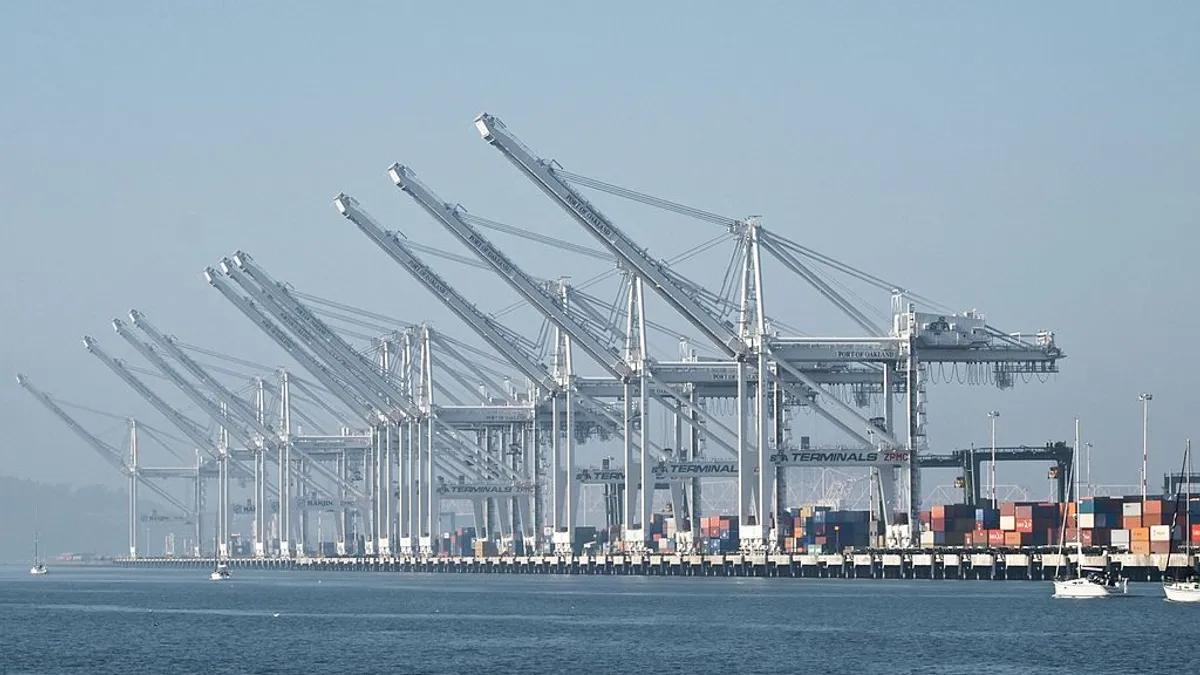Dive Brief:
- Containers are sitting for longer than usual at West Coast ports amid increased volume due to strong markets and tariffs, according to a report from MIQ Logistics.
- "Many ... vessels are calling terminals outside of the normal alliance pattern," MIQ said, contributing to a shortage of chassis in the Los Angeles/Long Beach area and pushing warehouses to near capacity.
- Carriers have been advised that the congestion may continue up to the Chinese lunar new year in early February and are encouraging their customers to pick up and return containers as quickly as possible.
Dive Insight:
Despite the 90-day stay of an additional tariff hike, retailers and importers are still rushing to get product into the U.S. before the rate on $200 billion in goods could go up from 10% to 25%. And the more they prepare for the worst, the more warehouses fill up.
Warehouse capacity has been stretched all year, and the data from November is no exception.
According to the latest Logistics Manager Index (LMI) data, warehouse utilization was down slightly in November from the previous month, but still at very high levels generally. The LMI is calculated using a diffusion index, so any reading above 50% indicates growth, and a reading below 50% means contraction. The November warehouse utilization score was 72.6%, up from the January/February score of 63.7%.
"Warehouses across the region have all but reached capacity," reported MIQ.
Full warehouses are a major factor slowing down the movement of goods, but the pace of 2018 imports has also kept West Coast ports operating at capacity, despite efforts to cut down on congestion.
MIQ's announcement said throughout the year, carriers have called at the Ports of Long Beach and Los Angeles outside of the usual alliance patterns. The extra tonnage could lead to an additional 128,000 TEUs of freight over the coming weeks.
The Port of Oakland had its busiest November ever for imports. The continued record imports, even in the tail end of peak season, along with projections that congestion may continue through February are a recipe for continued congestion and longer dwell times through the winter.














